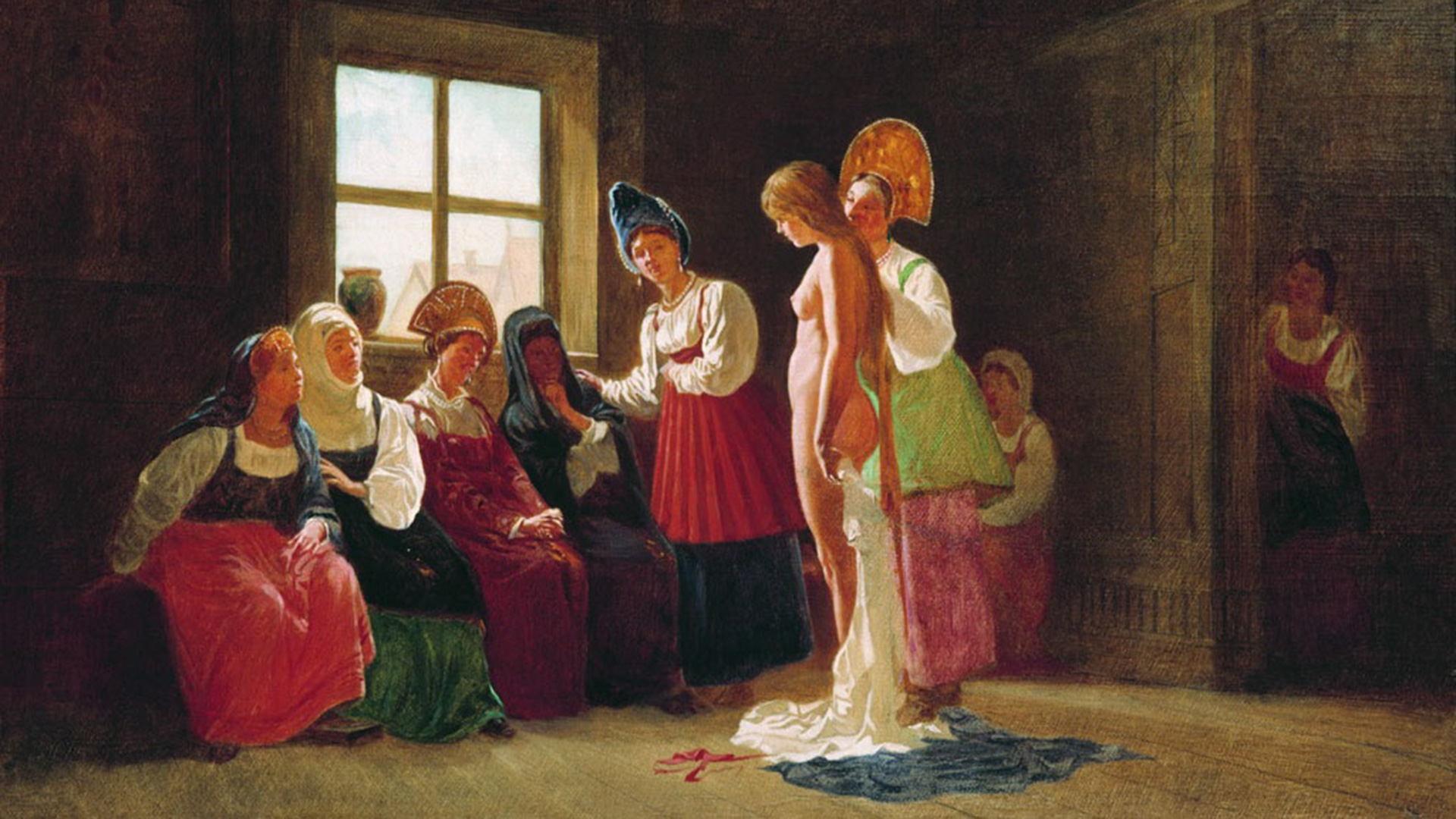
Why did the painting ‘Matchmaking of the Major’ make the public laugh?

Officer & artist
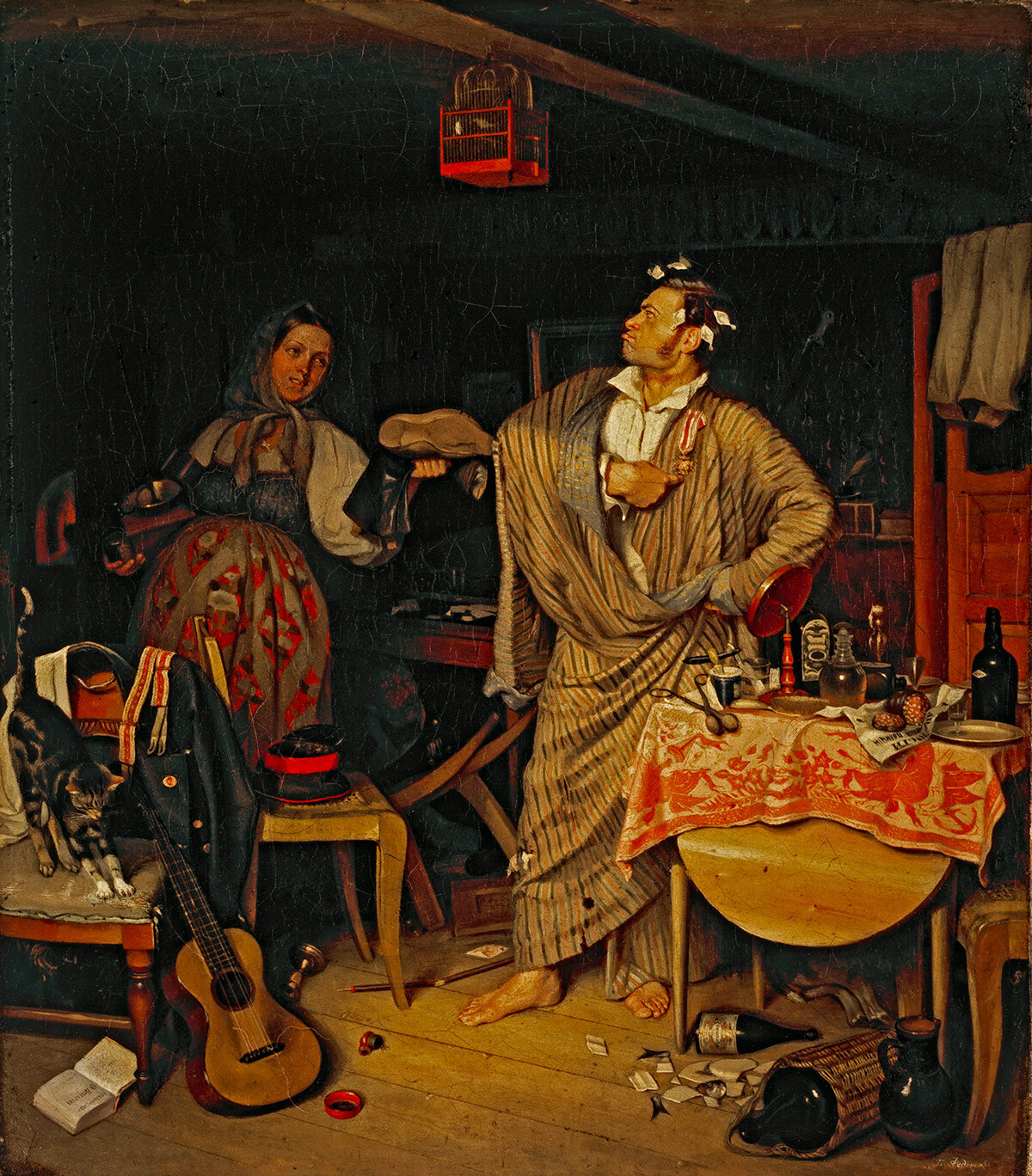
It took Fedotov a year to finish the painting - it was his third work. He, a retired officer of the Life Guards of the Finland Regiment, wanted to paint battle scenes. But, it turned out that everyday scenes were best for him. First, there were ‘Fresh Cavalier’ and ‘Difficult Bride’.
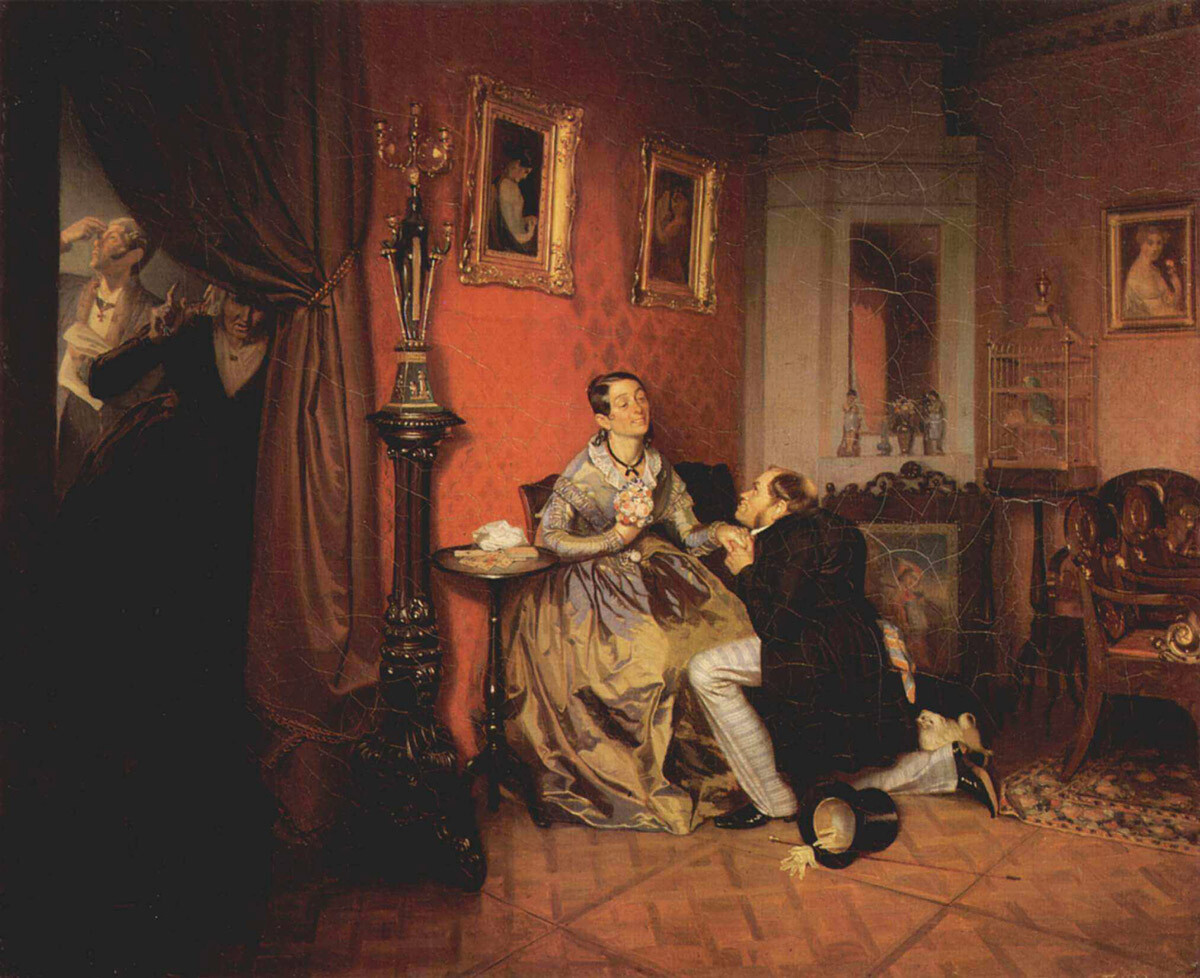
After seeing them, already famous artist Karl Bryullov was so delighted that he obtained a scholarship for the author. With the 700 rubles he received, the artist began to paint ‘Matchmaking of the Major’. He approached his work military thoroughness: he bought things to write from nature. I even bought a wedding dress. I wore a mannequin, giving it different poses to achieve believability. He approached his work with military thoroughness: he bought things to paint from life. He even bought a wedding dress. And dressed a mannequin, giving it different poses to achieve believability.

In 1849, Pavel Fedotov presented three of his works at an exhibition at the Academy of Arts. The public’s attention was focused on the new canvas: they were fist pumping, laughing openly and the artist himself read to the audience poems of his own composition explaining the essence of the ‘Matchmaking of the Major’.
Advantageous marriage

All the characters of the painting are in motion: an officer is peeking through the door, twirling his mustache; the cook is putting a culebiac pie on the table; the mother is catching the bride by her dress, who is ready to run away. The matchmaker is throwing his hands up, the father of the family is trying to button up his coat and the old lady-in-waiting is asking his assistant what is going on.

It would seem, what's the big deal? The usual fuss before matchmaking. But, it’s not that simple. Firstly, the marriage wasclearly unequal: impoverished noblemen at the time willingly married brides from wealthy merchant families. The benefits were clear to both sides - some gained a livelihood, others received the priviledges of the upper class. Although preparations had clearly been made for the groom's arrival, his appearance did cause a commotion. But he, confident of the outcome of the matter, did not even bring a bouquet with him.
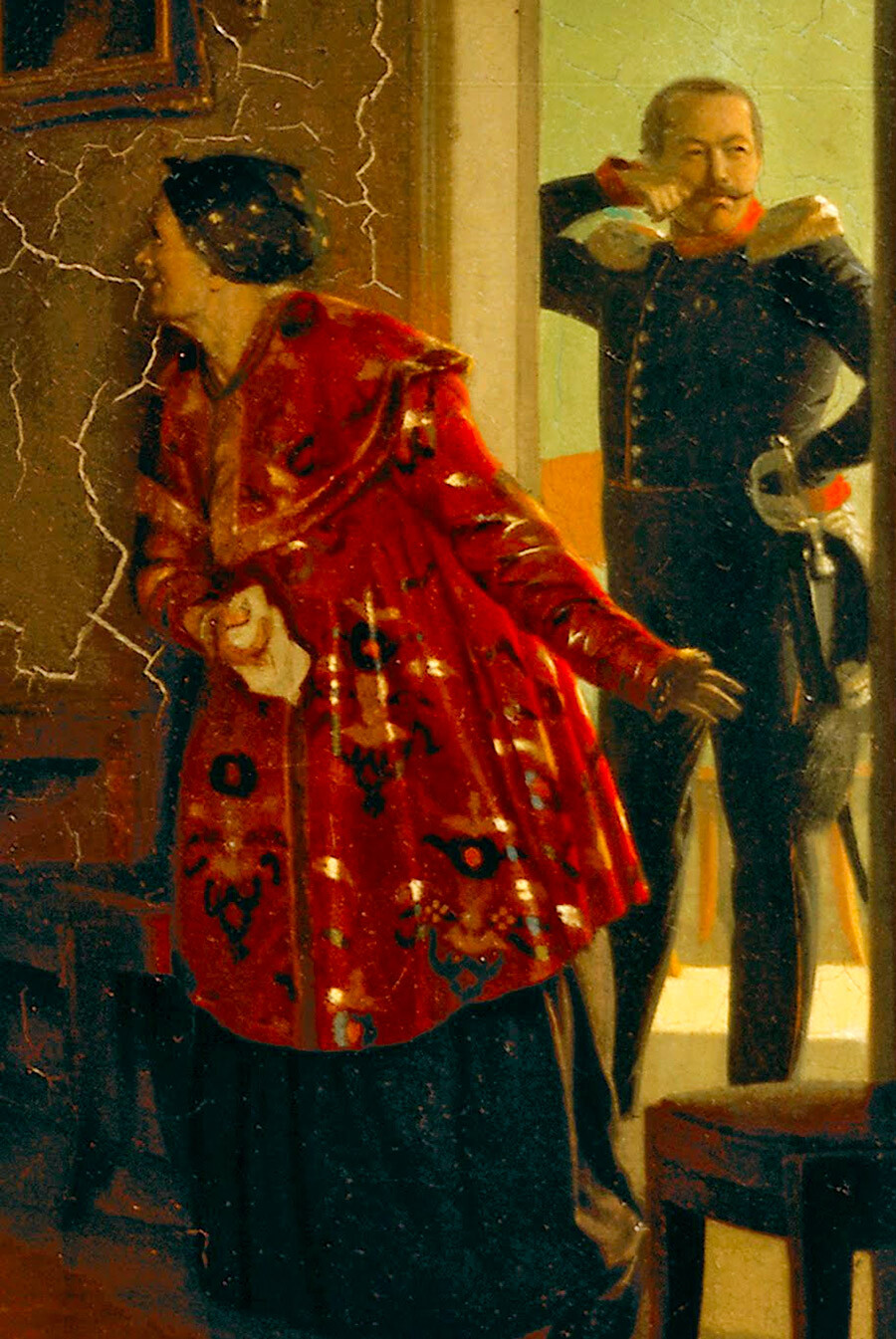
The merchant is clearly uncomfortable in his coat - he is not accustomed to such clothes. The ladies are dressed in ball gowns in violation of etiquette. The mother wears a shawl on her head, not a bonnet as was customary for married ladies at that time. The bride's dress, meanwhile, is too low-cut, with too much jewelry on it. And, instead of a fan, she has a lace handkerchief.
The setting of the dinner table - too small for so many people - also does not stand up to criticism. The tablecloth does not match the occasion - instead of white, it is pink with a pattern and a bottle of champagne with glasses stands forlornly to the side.

A huge crystal chandelier hangs from the ceiling, lavishly painted with nymphs and, instead of fashionable paintings, thewalls are decorated with a portrait of the Metropolitan.
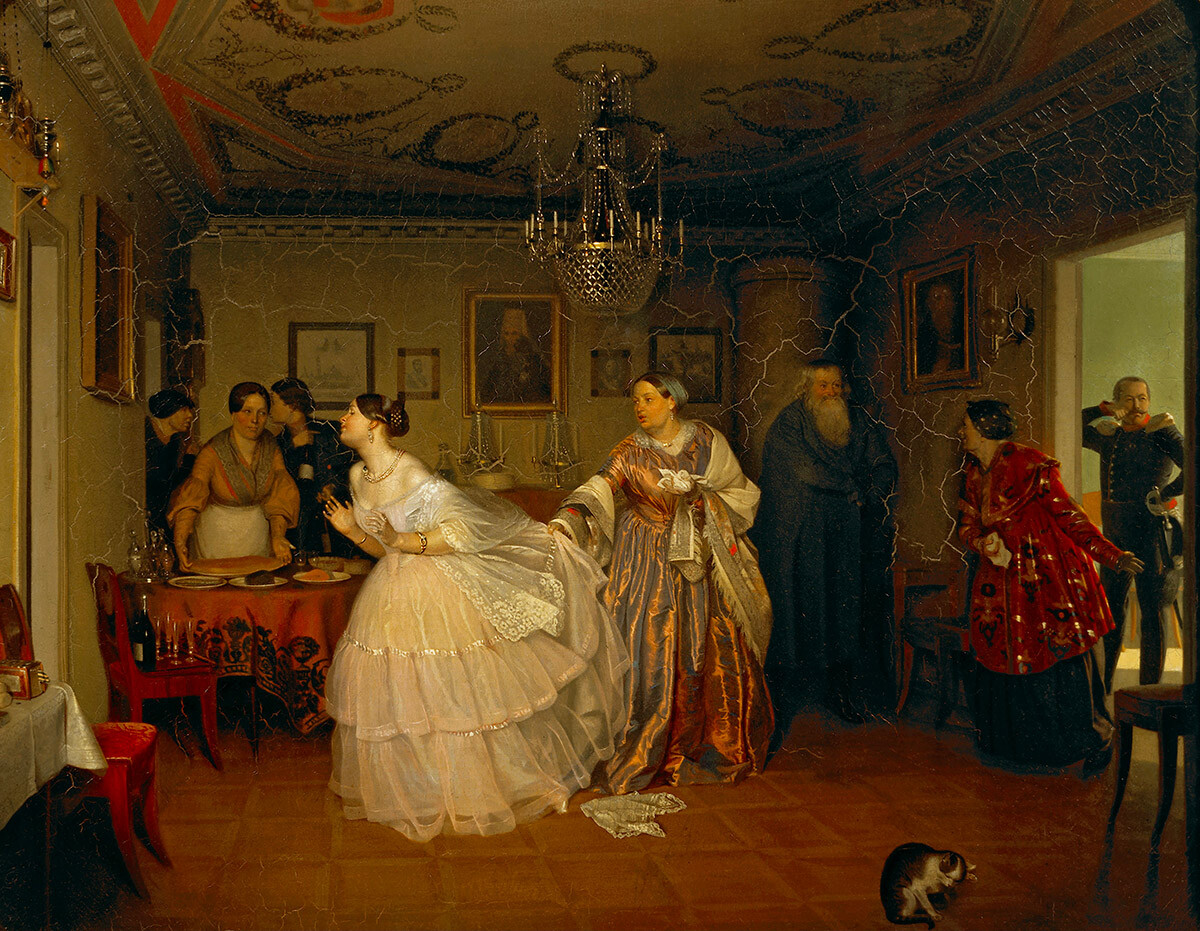
Having seen the picture, the public noticed a lot of inconsistencies - contemporaries they immediately caught the eye. Pretentious outfits, a violation of etiquette - everything in ‘Matchmaking of the Major’ indicated that its heroes want to quickly conclude a favorable deal and are not embarrassed about it.


